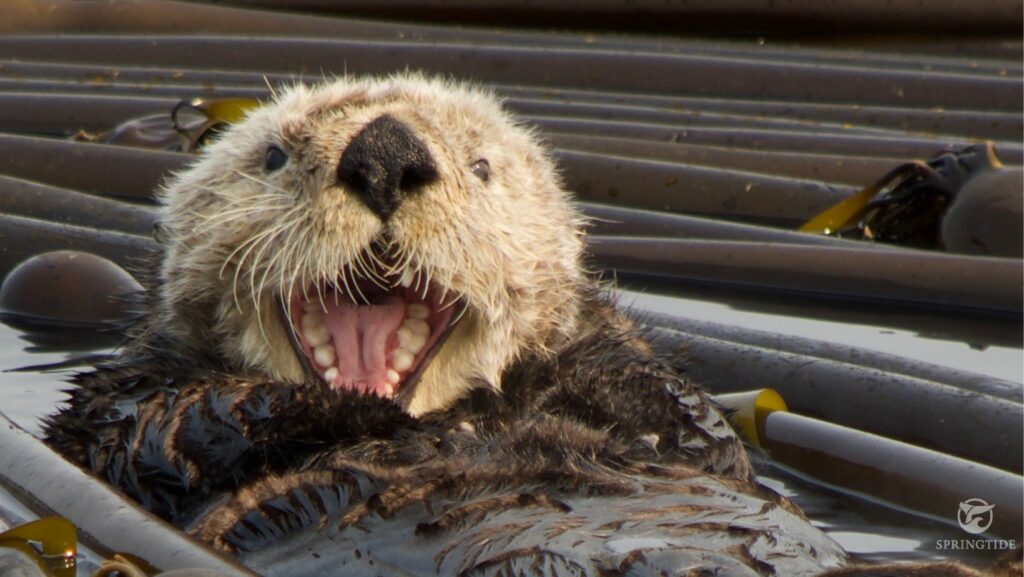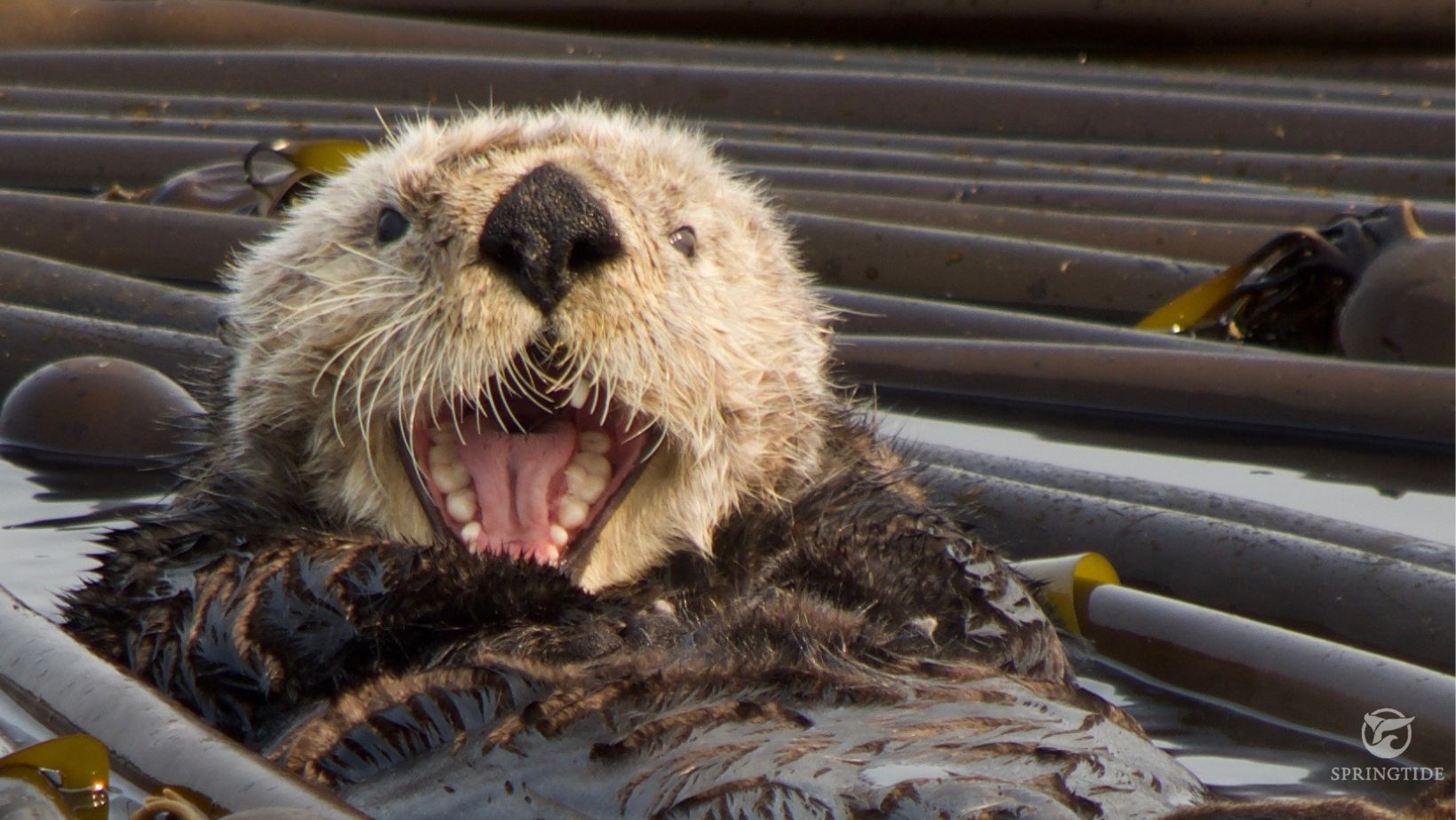
Vancouver Island’s river and sea otters are a popular attraction. Who can resist those sweet little faces? Well, in reality, they’re not so sweet. They are one of the most voracious predators of the Salish Sea, eating around 20% of their body weight every day in invertebrates and small fish. River otters have even been seen drowning Canadian geese and dragging them off shore.
Otters haven’t just been adored for their charm and good looks, however. In the late 1920s, they were hunted to extirpation by fur traders. Since the Sea Otter has “the finest [fur] of any mammal, consisting of 800,000 to 1 million hairs per square inch,” it seems their pelts were highly desired, much like beavers were further east.
But never fear! In the last decade, otters have returned to Vancouver Island, thanks to the work of some dedicated marine naturalists in 1969, with what MacLean’s calls a “worrying” vengeance. There are many conflicting views held between researchers and local First Nations – some largely in favour of the otters reintroductions, and some expressing skepticism and concern because of the animal’s voracious appetite.
When otters were hunted to extirpation for their pelts, sea urchins and other marine invertebrates decimated seagrasses, particularly bull kelp – Vancouver Island’s most abundant species of kelp, and the sea otters’ home. Now that they have returned, kelp forests are properly regulated, but otters threaten supply of shellfish for human populations that have historically depended on them. At this point, it seems too soon to tell if the right balance is close to being achieved, but we sure are happy to see them!
And otters aren’t just great for our seagrasses – they’re great for the ecotourism industry! Edward Gregr, writing for Oceanographic magazine, says that recent “surveys suggest that people would pay an additional $120 more for a wildlife tour if the chances of seeing sea otters was high.” I’m pleased to tell you that river and sea otters frequent Victoria’s inner harbour – no exorbitant fees necessary, just good timing! Otters are just one other critter you may spot on an already awesome journey with SpringTide.
Works consulted and further reading:
Brietzke, Chanda, Kelly Fretwell, and Brian Starzomski (2016). “Bull kelp, bullwhip kelp, ribbon kelp.” Biodiversity of the Central Coast. https://www.centralcoastbiodiversity.org/bull-kelp-bull-nereocystis-luetkeana.html
Gregr, Edward (n.d.). “In the Kelp Forests.” Oceanographic Magazine. 15. https://oceanographicmagazine.com/features/sea-otters-vancouver/
https://pacificwild.org/sea-otter-awareness-week/?gclid=CjwKCAjwscGjBhAXEiwAswQqNPwTxSLogX-drrQZbSMRpPrQ5_lpG1ZSDD85M-k4emG6p6S9R1xx9BoCEQ4QAvD_BwE
Hunter, Justine (n.d.). “How sea otters led a green revolution on the B.C. coast – and played a part in climate-proofing the Pacific.” The Globe and Mail. https://www.theglobeandmail.com/canada/british-columbia/article-how-sea-otters-led-a-green-revolution-on-the-bc-coast-and-played-a/
Renwick, Melissa (August 27, 2021). “Indigenous communities managed sea otter populations for millennia, study finds.” The Star. https://www.thestar.com/news/canada/2021/08/27/indigenous-communities-managed-sea-otter-populations-for-millennia-study-finds.html
“Sea Otters and River Otters” (n.d.). British Columbia.com https://britishcolumbia.com/things-to-do-and-see/wildlife-viewing/sea-otters-river-otters/
“Sea Otter” (n.d.). Discover Vancouver Island. https://www.discovervancouverisland.com/wildlife-on-vancouver-island/sea-otters/
